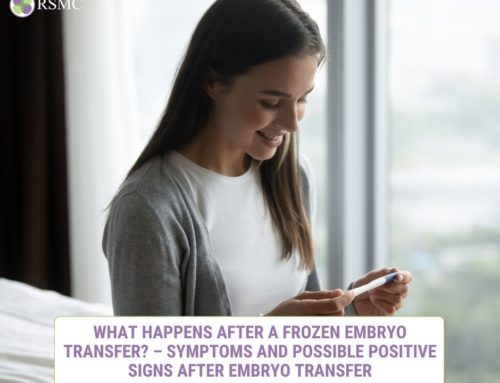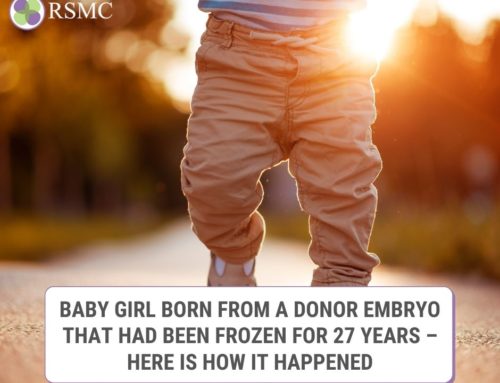Experiencing symptoms after embryo transfer can be exciting and nerve-wracking as you wait to find out if your IVF treatment has been successful. From mild cramping and bloating to breast tenderness and fatigue, these signs can leave you wondering whether they indicate early pregnancy or are simply side effects of the process.
Why Is Embryo Transfer Necessary?
An embryo transfer is often required when natural fertilization is difficult or impossible due to various medical conditions, including:
- Ovulation disorders: Irregular ovulation reduces the number of eggs available for fertilization.
- Damaged Fallopian tubes: These tubes are critical for transporting embryos to the womb. Scarring or damage may impede this process.
- Endometriosis: Uterine tissue growing outside the uterus can impact reproductive health.
- Premature ovarian failure: This condition affects estrogen production and egg release.
- Uterine fibroids: Benign growths may interfere with embryo implantation.
- Genetic disorders: Some inherited conditions prevent successful fertilization.
- Male factor infertility: Issues like low sperm count or motility can hinder natural conception.
IVF and embryo transfer provide a solution for many individuals and couples facing these challenges.
Embryo Transfer: A Quick Overview
Embryo transfer is the final step in the IVF treatment process, where the carefully cultured embryo(s) are placed into the uterus with the hope of implantation and pregnancy. This step typically takes place three to six days after egg retrieval for a fresh cycle or several weeks later for a frozen embryo transfer (FET). The procedure itself is relatively quick and painless, but the preparation leading up to it is important for increasing the chances of success.
Preparing for the Embryo Transfer
In the days leading up to embryo transfer, the body is prepared to create an optimal environment for implantation. This involves hormone treatments, including progesterone supplementation, which helps the uterine lining become more receptive. The progesterone is usually administered through injections, vaginal suppositories, or oral medications, depending on the clinic’s protocol. Ensuring the progesterone levels are adequate is vital to supporting a potential pregnancy.
Before the transfer, an ultrasound is done to evaluate the thickness of the uterine lining, ensuring it’s within the ideal range to support implantation. Patients are often advised to arrive with a full bladder, which helps with better ultrasound visualization and catheter placement during the procedure.
The Embryo Transfer Procedure
The embryo transfer itself is a straightforward, non-invasive outpatient procedure that takes approximately 15 minutes. It is performed without anesthesia, as most patients report only mild discomfort. During the procedure:
- The embryo(s) are carefully loaded into a thin catheter.
- The catheter is gently inserted through the cervix into the uterus under ultrasound guidance.
- The embryo(s) are placed in an optimal location, typically 1-2 cm from the uterine fundus.
Once the transfer is complete, patients are typically advised to rest for about 30 to 60 minutes, although many clinics suggest resuming daily activities soon afterward. Some women may experience mild cramping or a sensation of pressure, which is completely normal.
What Happens After the Transfer
Following the embryo transfer, the waiting period begins. Known as the “two week wait,“ this period is when the embryo hopefully implants into the uterine lining and pregnancy begins to develop. During this time, it’s important to continue taking progesterone supplements and follow any lifestyle recommendations provided by the fertility clinic.
Symptoms After Embryo Transfer: What You Might Experience
The two-week wait after the transfer is filled with anticipation. During this time, you may notice various symptoms. These are often due to hormonal changes from progesterone supplementation and the embryo transfer itself:
- Mild cramping: Similar to menstrual cramps, this may indicate uterine activity.
- Breast tenderness: Hormonal changes often cause sensitivity.
- Light spotting: A common sign of implantation or hormonal fluctuations.
- Increased vaginal discharge: Elevated progesterone levels can lead to a noticeable change in discharge.
- Fatigue and bloating: Common side effects of progesterone and hormonal changes.
- Feel sick to their stomach: Some individuals experience nausea or morning sickness early on.
These symptoms can overlap with early pregnancy signs or premenstrual symptoms, making it challenging to determine if the embryo transfer has been successful.
The Emotional Side of the Two-Week Wait
The two-week wait after an embryo transfer is often described as one of the most challenging parts of the IVF treatments. It’s a period filled with hope, anxiety, and anticipation as you await the results of your pregnancy test. The uncertainty of whether the embryo transfer has been successful can make each passing day feel longer, with every potential symptom scrutinized for signs of implantation or early pregnancy. Managing expectations and emotions during this time is crucial for mental well-being.
Coping with the Emotional Rollercoaster
The hormonal changes from fertility medications, combined with the emotional weight of the process, can lead to mood swings, heightened sensitivity, and stress. Many women report feeling overwhelmed and experiencing fluctuations between optimism and doubt. It’s essential to practice self-care and focus on emotional resilience by:
- Engaging in hobbies, light activities, or work can help distract from constantly thinking about symptoms.
- Sharing feelings can provide reassurance and comfort, whether from a partner, friends, or online fertility communities.
- Meditation, deep breathing, or gentle yoga can help alleviate anxiety and promote relaxation.
Taking Care of Yourself
Prioritizing self-care during this time can help maintain emotional balance and improve overall well-being. Some practical ways to nurture yourself include:
- Eating a healthy, balanced diet rich in nutrients to support your body.
- Avoiding activities that could cause unnecessary stress, such as reading too much into online forums.
- Getting enough rest to help your body recover from the process.
- Focusing on things within your control, such as following medical advice and staying hopeful.
The Pregnancy Test: The End of the Two-Week Wait
After what feels like an eternity, the long-awaited day of the pregnancy test finally arrives—typically around 10 to 14 days after embryo transfer. This blood test, known as the beta-hCG test, measures human chorionic gonadotropin (hCG), a hormone that indicates pregnancy. While at-home pregnancy tests are tempting, they can often provide misleading results due to residual hormones from fertility medications, leading to unnecessary stress. A blood test conducted by your fertility clinic is the most accurate way to confirm whether the embryo transfer has been successful.
If the test result is positive, your fertility team will likely continue monitoring your progesterone levels and overall progress through additional blood tests and ultrasounds to ensure a healthy start to the pregnancy. In most cases, progesterone supplementation will continue for several weeks to support the uterine lining and prevent early pregnancy complications. If the test result is negative, it’s important to take time to process the news and discuss the next steps with your medical team. Many patients require multiple IVF cycles before achieving success, and your clinic will guide future options and support.
The journey after an embryo transfer is both hopeful and challenging. You can approach this time with confidence and care by understanding the symptoms, side effects, and necessary precautions. Remember to lean on your fertility team and loved ones for support as you await the next chapter in your journey to parenthood.























